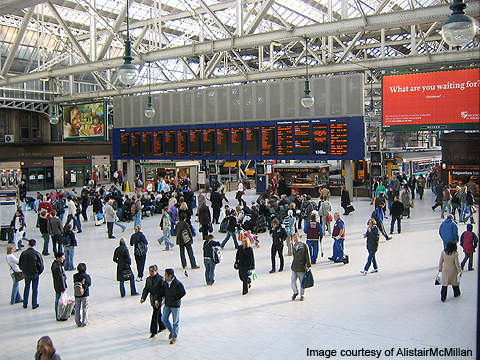Glasgow Central Station, opened in August 1879, is among the biggest and busiest railway stations in the UK. Managed by Network Rail, the station serves about 34 million people each year. The station provides connectivity to the southern towns of Glasgow and also serves as a hub for intercity services from Glasgow to the southern region of the country.
Glasgow central station history
Following its opening in 1879, Glasgow Central station has been expanded to accommodate increasing numbers of passengers. In 1890, the capacity of the station was found to be insufficient and the bridge over Argyle Street was widened to include a ninth platform.
From 1901 to 1905, the station was reconstructed by further extending the station over the Argyle Street to include 13 platforms. The bridge over River Clyde was raised by 30in and expanded to include eight tracks. In the 1980s, additional works were carried out on the high level station to replace the old train information office with an electro-mechanical destination board.
Glasgow station design and construction
The station contains two levels, the low-level station and the high-level station. The low-level station was a separate station constructed for Glasgow Central Railway. It has a single-island platform and provides services for the Argyle line of Glasgow suburban railway.
The high-level station initially contained eight platforms on a railway bridge above Argyle Street. Another four-track railway bridge constructed over River Clyde connects the station to the south. The bridge was constructed by Sir William Arrol, a Scottish civil engineer.
The initial phase of work undertaken on the original Glasgow Central station was designed by Sir Robert Rowand Anderson, a Scottish Victorian architect. The entrance of the station features elaborate ironwork. The porte-cochere (portico-like structure) arcade of the station stands on seven pillars.
A key feature of the station is the huge glass-walled bridge known as the Heilanman’s Umbrella above Argyle Street. The bridge earlier carried the station building’s booking office and train information display. Several shops, bars and theatres are located below the bridge.
The extension of the station building was designed by Scottish architect James Miller. The longitudinal ridge and furrow design of the roof of the station building was designed by Blyth and Cunningham. In 1998, Bovis Lend Lease carried out the complete re-roofing of the station. The company also carried out the internal refurbishment of the station. The restaurant area of the station building was upgraded in 2005.
Glasgow station services
Five companies provide train services from Glasgow Central station. These include First ScotRail, Virgin West Coast, Transpennine Express, National Express East Coast and XC CrossCountry. First ScotRail provides passenger services within Scotland and runs sleepers to London Euston. Virgin West Coast runs services to London Euston and Birmingham New Street.
National Express East Coast provides services to Edinburgh, Newcastle and London King’s Cross. Transpennine Express runs trains to Manchester Piccadilly railway station and Manchester Airport railway station.
CrossCountry trains cover Edinburgh and East Coast Main Line routes. Renaissance Trains proposed to run trains to Liverpool Lime Street and Nottingham. As of 2009, negotiations were being carried out by the company with Network Rail.
Central station facilities
Glasgow Central station’s main building houses a spacious concourse, which comprises a range of fast food joints, ticket offices and a travel centre. A number of cash dispensers are situated at various points in the station. A bureau de change is located at the Currency Express. Passengers are also provided with Wi-Fi coverage in the station.
Long-stay parking facilities operated by the National Car Park are available to passengers on Midland Street. A bicycle rack is also available at the station.
Future Glasgow station developments
Two new platforms were planned to accommodate the increased passenger inflow with the construction of the Glasgow Airport Rail Link project. Although the rail link project was cancelled, the construction of the platforms will be undertaken. The construction plans are one of the biggest undertaken over the last 100 years.












